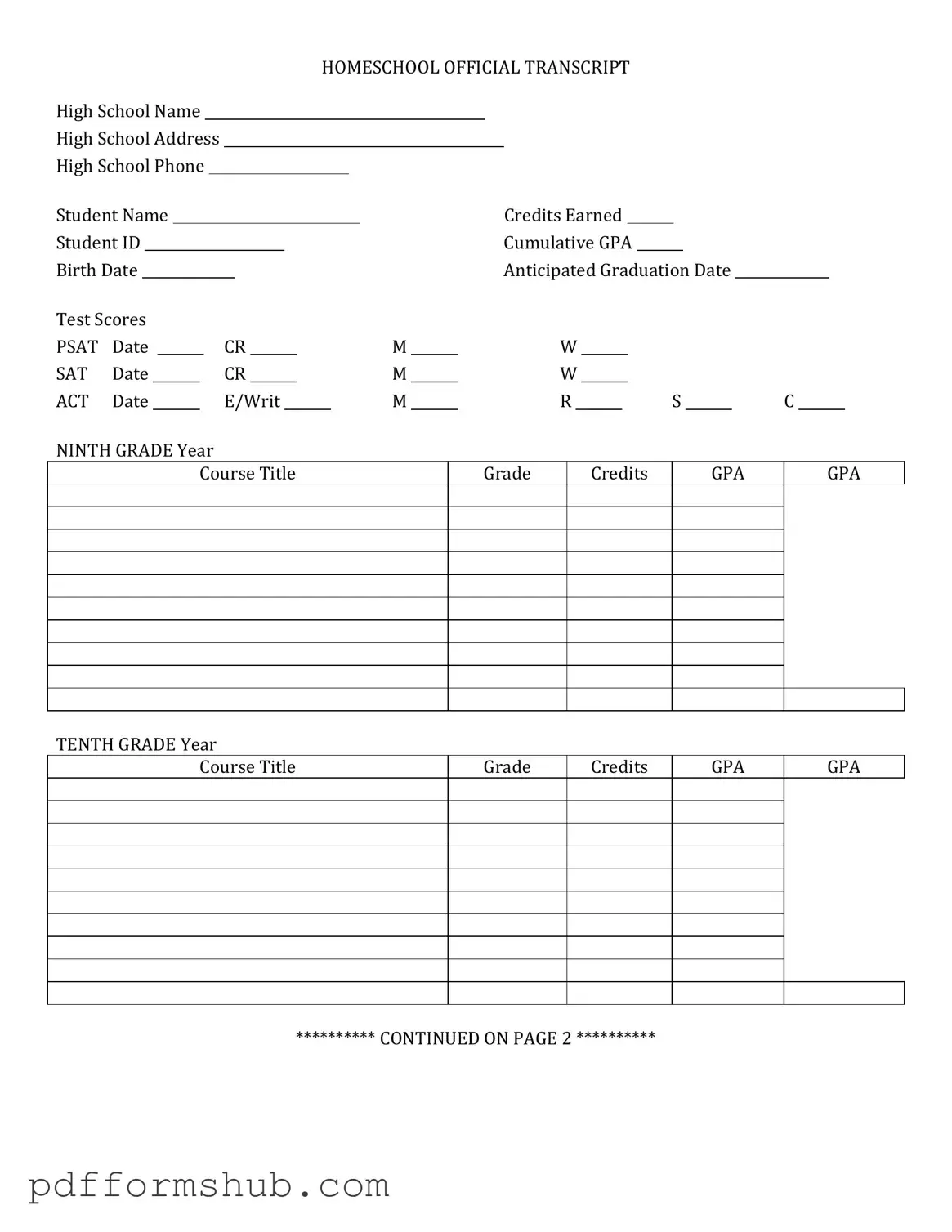Fill in Your High School Transcript Form
The High School Transcript form is a vital document that provides a comprehensive record of a student’s academic achievements during their high school years. This form typically includes information such as courses taken, grades earned, and graduation status, serving as a key tool for college admissions and job applications. Understanding its importance is crucial for students and parents alike, so take the first step by filling out the form below.
Customize Form
